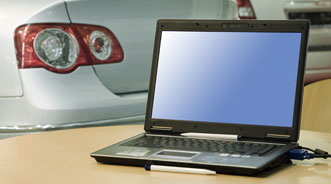Microsoft Launches New Technology Platform for Automakers

Microsoft Corp. announced Tuesday the launch of its latest technology platform called Windows Embedded Automotive 7. The new platform is designed to provide automakers with technology that can be integrated into vehicles to enhance communication, entertainment, navigation and information.
The new system is now being added to vehicles from a trio of nameplates as well as equipment from another major OEM supplier.
The three brands that now have access to this platform are Ford, Nissan and Fiat. Microsoft also indicated Alpine has access to this Windows platform as well.
Microsoft executives shared details during the SAE Convergence 2010 Conference and Exhibition about how each automotive company plans to harness this technology.
—Ford: This month, the automaker revealed that MyFord Touch, the second generation of Ford SYNC built on the Windows Embedded Automotive platform, is launching in Europe and Asia early next year. The company pointed out SYNC has been installed in more than 2.5 million vehicles in North America since its launch in 2007.
—Nissan: Microsoft also announced that the 2011 Nissan LEAF touchscreen information hub is powered by Windows Embedded Automotive technology. The hub is geared to provide drivers and passengers with a navigation system and electricity charging station locator. It also can share power consumption monitoring information with drivers and enable easy in-car climate monitoring.
—Fiat: The Fiat 500 set to hit showrooms this year is scheduled to include Fiat’s Blue&Me technology, powered by Microsoft. The company explained the product is designed to be a media gateway that can integrate mobile phones and digital music players into the audio system and controls of the vehicle, allowing voice control of these devices by the driver.
—Alpine: The company plans to deliver advanced in-vehicle navigation systems, powered by Windows Embedded Automotive, to automakers, including satellite-guided, turn-by-turn directions. The system also is to contain other useful features such as voice-guided controls and information on more than 7 million points of interest.
Some of the key features of Windows Embedded Automotive 7 include speech commands, touch input, hands-free Bluetooth phone communications, advanced dashboard systems for access to music, maps, third-party apps and navigation, and streamlined connectivity with other devices.
Beyond those general amenities, Microsoft also highlighted three other developments Tuesday intended to broaden the potential of Windows Embedded Automotive 7. They include:
—Silverlight for Windows Embedded. The company explained Silverlight for Windows Embedded can give OEMs the ability to quickly create rich device user experiences with engaging 2-D and 3-D graphics by using a familiar Microsoft technology and taking advantage of a large ecosystem of Microsoft Silverlight designers. Executives think experiences built in Silverlight for Windows Embedded can be refined rapidly on the desktop and deployed unchanged to the target device facilitating flawless delivery from designer to developer.
—Microsoft Tellme speech technology. Management said Microsoft Tellme speech technology can power simple and hands-free system commands such as allowing the entire interface to be driven through speech. In addition, officials mentioned new support for SMS reply by voice can allow text message replies to be constructed by speech.
Microsoft added Windows Embedded Automotive 7 can support eight languages: U.S. English, U.K. English, German, Mexican Spanish, Continental Spanish, Canadian French, Continental French and Korean.
—Next-generation automotive system tools. Microsoft believes new tools for developers can support the stable integration of advanced, high-performance, third-party systems. They also could include improved test modules with easy-to-use product engineering guidelines to help simplify the development process, increase reliability and speed time to market.
Thilo Koslowski, vice president in the industry advisory service manufacturing group at Gartner, gave an assessment of how important it for manufacturers to get a better hold of the technology that owners are desiring in their vehicles today.
“Consumers are increasingly demanding access to new multimedia content, productivity solutions and connected services for entertainment and communication from their in-vehicle system, similar to what they expect from their other devices,” Koslowski indicated.
“To build and deploy compelling in-vehicle infotainment system, experienced technology partners, car makers and suppliers must come together,” Koslowski went on to say, “The result of these collaborations turn the automobile into a seamless extension of the digital lifestyle.”
Kevin Dallas, general manager of the Windows embedded business unit at Microsoft, elaborated about how the company is responding to those challenges.
“Microsoft deeply understands that technology collaboration is paramount to the evolution of integrated, in-vehicle infotainment systems,” Dallas declared.
“We are excited to create new opportunities with Windows Embedded Automotive 7 working with our broad ecosystem of partners to bring the best in entertainment and productivity solutions to drivers and passengers around the world,” he concluded.

 View The Latest Edition
View The Latest Edition

